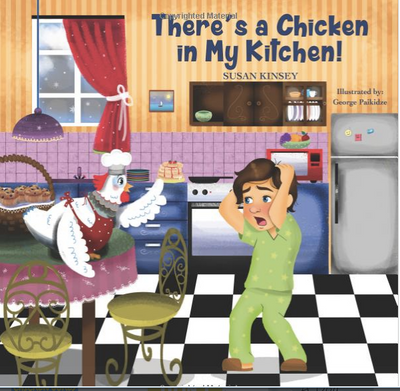Oh no!!! Do you hear that? Your sweet little boy just started to cry. Not the “ouch, I’m hurt” cry…. It’s the “I’m so mad and annoyed” cry.
If you don’t do something quick, you know that soon he will be on the floor, kicking his feet and yelling.
This is the last thing you need at the end of the day, 20 minutes before dinner.
Follow these 5 Tips to calm your child down:

- Stay Calm
Children feed off of the energy around them. If you become upset, they will “feel” that emotion and become more upset. Instead, stay calm. Take a big breath and ask them if they need a hug. If they don’t, quietly tell them that you will help them when they are ready.
Sometimes it's hard to stay calm. It's okay to take a break, chew some gum, take a large gulp of coffee or hum a happy tune! When your energy is calm, your child will naturally calm down too.
- Give Them Space
Parents often tell me they try to “talk their child down” from a tantrum. This hardly ever works because if your child is overwhelmed with emotions, the last thing they want to do is listen to a lecture! Instead, give your child space and the opportunity to take breaths, processing their emotions independently. If they are hurting themselves or items, redirect them to a safe space to calm down (like near some pillows to throw instead of the wooden blocks.) Once they are calm, they will be ready for some help.
- Allow them to Calm Down in their own Way
Teach your child some simple calm down strategies that utilize their sensory system. When adults become upset, we tend to take a walk, go on a run, chew gum, drink some coffee or breathe in some fabulous smelling lotions. These sensory strategies will help your child also! By creating a simple bucket filled with child-safe sensory items, your child will be able to access these on their own. Soothing Sammy teaches children how to implement these simple techniques independently, so they are ready to talk to you and solve their problem.
4. Talk to Them When they are Ready
After your child is calm, ask them if they are ready for your help. Sometimes there is a simple solution on how to fix the situation, while other times talking through the situation will help you and your child understand what made them mad. Asking simple and direct questions or comments, such as: "What made you upset?" or "Show me what happened." will make communication easier. Since your child is still “cooling off”, make sure to use simple words and phrases that you know they understand.
- Prepare for future problems.
Now that you have discovered why your child was upset, it's time to help them discover what to do if they are in this situation again. If your child is upset that Johnny took the green car and they are okay with playing with the red car instead, make sure they know where the car buckets are (in case Johnny has the color car your child wants in the future.) Next time when they are feeling frustrated in a similar situation, they will remember your conversation and ask for help (or find the car bucket) before becoming overwhelmed and boarding that train to meltdown city!
How is my child supposed to calm down on their own?
After spending 18 years working with preschool children, I couldn’t find anything that teaches children how to calm down, communicate their feelings and problem solve in a hands-on way. This is why I created the “Soothing Sammy Program.”

Soothing Sammy teaches children how to process their feelings, identify their emotions and problem solve in a way that is easy for children to understand and simple for parents to implement!





